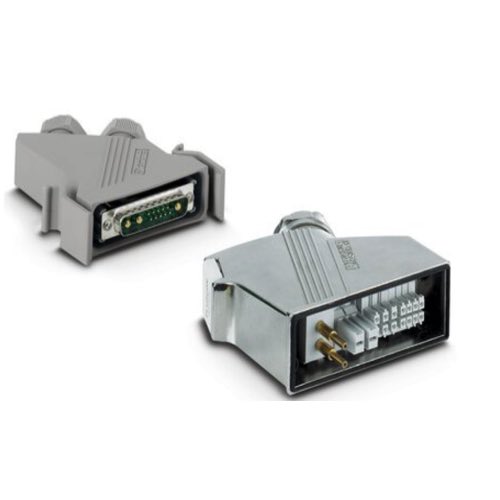Rectangular Connectors

Rectangular connectors have found use in many fields of industry to transmit power, control signals, and data in even the most demanding applications. With a rugged design, they are most suitable for high-performance, high-reliability conditions often encountered in space, military, and industrial applications. The connectors can be found in many different configurations, providing varying contact types. Among the prominent types are D-sub connectors and modular panel connectors. Both types are compatible with a wide array of cabling systems.
Designed for applications that require space-saving solutions with an abundance of contact points, high-density rectangular connectors are ideal for achieving reliable, high-performance connections in a variety of conditions—especially those where shock and vibration threaten to disrupt the electrical current. Although the connectors come in several sizes, in either gender, and with either a male or female contact arrangement; all versions share a lifespan of over 500 mated cycles. Ease of use characterizes all arrangements, too. Except for one, which uses screws instead, all employ either latches, levers, or jackscrews for fastening.
More Information about Rectangular Connectors
For heavy-duty and automotive applications, these connectors are a preferred choice. Their rectangular shape gives them space-saving advantages, but they are by no means weak; they provide all the performance one expects in an auto or heavy-duty connector. And they connect other things with ease. They accommodate different panel and board options to mount them. And they make connecting in the stock or custom configurations a breeze. Because of these few reasons, they are an indispensable
FAQs
Does the range of rectangular plugs include coaxial contacts?
Yes, the range of rectangular plugs often includes coaxial contacts to ensure reliable signal transmission in high-performance applications.
Serial Communication Basics
In telecommunications, the process of sending data sequentially over a computer bus or communication cable is known as serial communication. Serial communication transmits data one bit at a time. Parallel communication transmits bits simultaneously over multiple communication lines in a single bus or cable. While it may seem that parallel communication would be the preferred method, this is not true in many situations.
Because of the increased complexity and data transmission, serial communication has faster speeds than parallel communication. The speed at which serial is communicated can be altered by adjusting what is known as the BOD rate, which simply increases the number of the bits that can be transmitted per second. This is one of the reasons serial communication methods have remained such a common method for basic communication in much of computer based hardware used today.
Some of the most common standards that have been created to take advantage of serial based communication in the industrial space would be RS 232 and RS 485. The earlier RS 232 standard was very common in computing in many different industrial, commercial and residential applications. It had lower transmission speeds, short maximum cable lengths and large voltage swings, making it useful only in certain situations. RS 485 is an improved standard that is still found in many of the same applications today. It resolved many of the issues the earlier RS 232 standard had by allowing longer cable lengths, higher transmission speeds and other improvements that increased its usability and performance.

